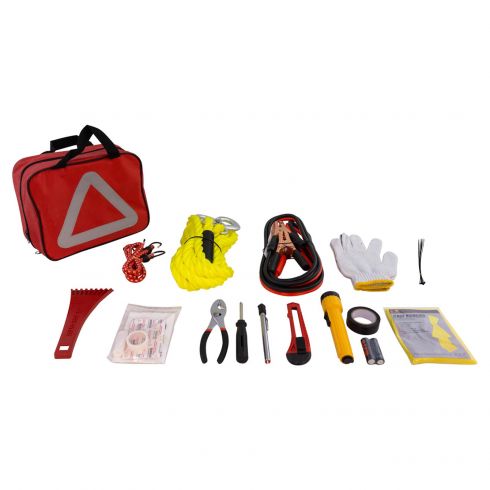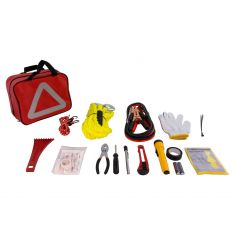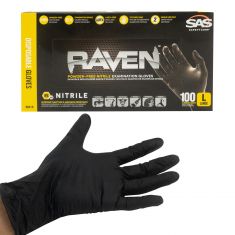Hi, I’m Mike from 1A Auto. We’ve been selling auto parts for over 30 years!
The holidays can be a really busy time. But before you drive on the highways and through the cities, here are six things you can check in your vehicle before your holiday road trip.
You can start by checking the fluids under the hood. Usually by the driver's side of the vehicle up top here you'll have your brake fluid reservoir. You want to make sure that it has the proper amount of brake fluid in it. There'll be some sort of line telling you where it's full. If it's not full, you need to add some, so check your owner's manual. It will have the proper type of brake fluid you're supposed to use.
One of the most annoying things when you're driving down the road in the wintertime is when you run out of washer fluid and your windows get all streaky and you have nothing to clean them with. You want to make sure that your window washer bottle is filled with fluid. It should be easy to identify. It has this picture of a window with water squirting out. It looks like a little spout. Here, you can just open it up, dump in your preferred window washing fluid. Usually just that basic blue stuff works great. You don't want to put water in here because it will freeze, so put the blue washer fluid in here. You can see it. It's translucent. When you fill it up, you'll know. It usually takes about a gallon. These are big tanks.
As we move along here, you want to check your coolant level. There should be an overflow bottle on your vehicle. There should be some lines on it. There should be a line that marks it low and a line that marks it high. You want to make sure that you add coolant to this bottle to bring it up the full mark. If this bottle is completely empty, you want to wait until the car is cool. You can open up the radiator cap, and you can add coolant to just below the top of the radiator neck and then reinstall your cap and top off the overflow bottle. Make sure you use the approved coolant. Of course, always check your owner's manual. You don't want to put straight water in the radiator, especially in the wintertime. It can freeze.
Check your oil. You want to find your dipstick. Usually it's got a yellow handle like this. Pull it out, check the level, and make sure it's at the full mark. There should be a low mark and a full mark. You want to make sure it's at the full mark. If you need to add oil, you can find your oil cap usually somewhere on the top of the engine. Over here, it's this nice yellow cap that's easy to see. Of course, use a funnel and add the appropriate oil.
This vehicle doesn't have any power steering fluid, but if your car does use a hydraulic power steering system—this one uses electric—you want to make sure that that fluid's topped off, too.
Brakes are one of the most important safety systems of your vehicle, so before you take a long road trip you should definitely check them. There are tools too to check the brake pad thickness. Brand new brake pads are between 10 and 12 millimeters, and worn are brake pads are around 2 millimeters or less, so if your brake pads are at that point, they should be replaced. If you're not confident in checking them yourself even after watching our videos, you should definitely take them to a professional.
I've got the vehicle up in the air trying to inspect the brakes. Sometimes depending on the wheel design you can look through and see how much brake pad life you have, and sometimes with the design of the caliper, this one's really hard to see. What I'm going to have to end up doing is removing this wheel to better inspect the brake pads. We've got some measuring tools, but you can visually tell. New brake pad has 10 to 12 millimeters of pad thickness. So, for example, that's 12 millimeters. This is 10 millimeters. We can see visually eyeballing it if I put that in there 10 is far too bit. It doesn't fit between the pad and the rotor. But I think if we move to the 6 millimeter It's just about six millimeters, so these pads are roughly about half worn. Those are in pretty good shape. I wouldn't worry about changing those just yet.
The way that this tool works, it's got six millimeters in this direction and also six millimeters in this direction, so you can slide it in here and then turn it. I can feel the backing of the brake pad and then right against the rotor face. About six millimeters fits in there, too, so this outer pad's worn evenly with the rear. That's telling me there's nothing wrong with the brake caliper, and again, these pads are about halfway worn, so I'm going to leave them alone. They're in good shape. Of course, at this time of year it gets dark so much earlier, especially around the holidays.
You want to make sure that all your lights are working on your vehicle so you're not driving down the road with a headlight out or a taillight out. You want to make sure that all your signals are working. It's just better for safety, it's better for vision and just generally all around. You don't want to get pulled over either during the holiday season and get a silly ticket for having a bulb out.
We're going to turn on our headlights, just check their operation. See the low beams are working. Marker lights. That little daytime running light. The high beams are working. You can hit the four way button and check your flashers. Check our fog lights. Looks like everything in the front is working. We're going to go check the rear. The running lights are working. Flashers are working. Plate light bulbs are working. Only thing left to check is the brake lights and the backup lights. You can just have somebody help you by getting in the vehicle, stepping on the brakes, and then just shifting the car into reverse with their foot on the brake.
To find your recommended tire pressure, it will either be in the owner's manual or opening the driver's door there should be a sticker right here. If you've got different size tires available on your vehicle, it will list the different size tires. This one only has one size of tires, but the front and the rear pressure is different. So, we're going to set the front to this pressure and the rear to this pressure, and then we'll also check the spare tire to make sure that it has the proper amount of pressure, too.
It's important to check your tire pressure to get optimum wear, great fuel economy, and for safety. You don't want a tire going low and causing you to either have a blowout or lose control of the car, worst case. So, it's best to just check your tire pressure when the tire is cold before you even leave for your trip, that way you have time, you can put air in it, address any issues you might have with it. You can either use one of these old school tire pressure gauges or a fancy digital one, whatever one you have access to. It's as easy as taking off the valve cap. We're going to check this one right here. It's supposed to be at 32, and this one's at 32. It's perfect.
Something that's important to check is the condition of your wiper blades. It might not be something you notice until it's raining or snowing out that they're not working great, so if you've noticed that they don't seem to be clearing that well, it's probably time to replace them. It's usually about one year that they need to be replaced. You can also just pick them up and look at them, see if they're ripped or torn. These ones are in good shape, so they're fine. They don't need to be replaced.
Another thing you can do is if you want to take a little bit of glass cleaner and a rag, and you can clean wiper blades, believe it or not. They do get dirt on them, and even cleaning them sometimes helps them perform better if you're not able to buy new ones. Those had a little bit of dirt on them. Get this side. I'll have to switch over to reach the other side, but you get the idea. You can clean them off if you don't have time to get new ones. But if there's any question about whether or not they're working great, you should get some new ones.
Then, of course, don't forget your rear wiper blade. Sometimes these get forgotten about. The blade can rip off, and then it doesn't work that well. It can even scratch the rear glass. A lot of times because this is at the back of the car, people forget about it. It's very important to have those. You definitely want to have it. As you can see in the wintertime, you end up with all the dirt and road grime on the back window. This helps clear it. Worst case, you can take a rag and some glass cleaner and just clean it off in the meantime until you get a new one. You can see all the stuff that comes off of it. Put that back.
Just one extra thing to double check before you go on your road trip. Before you load up your cargo area with all your goodies to head out on your trip, just make sure that your jack and toolkit is here. This vehicle, it's underneath the storage area. Just lift up this foam, and here we've got our jack and tools. Got the towing iron, the jack, the screwdriver. There's a lug wrench in there, too. There's also the jack handle here. It's stowed over on the side.
One other thing to check is the spare tire. A lot of people forget about that, and they don't put air in it. You're going to have to unscrew it and take it out and check the tire pressure. I'll just lay that down gently. It's important to check the pressure on this because if you ever get a flat and you need to use it, it'd be really terrible to pull it out and have a flat spare tire as well as a flat normal tire. On these, it does say "Inflate to 60 PSI". It also says that on the driver's door. I've taken the valve cap off here, and I'm going to check our pressure on this one. It's 61 1/2. That's good enough. Put our valve cap back on. Of course, these are for temporary use only. Just use it to get yourself off the highway to a safe place and get your regular tire repaired or replaced. Of course, before any road trip and really driving in general, just make sure that you have all your proper paperwork in your glove box.
Thanks for watching. Visit us at 1AAuto.com for quality auto parts, fast and free shipping, and the best customer service in the industry.


















